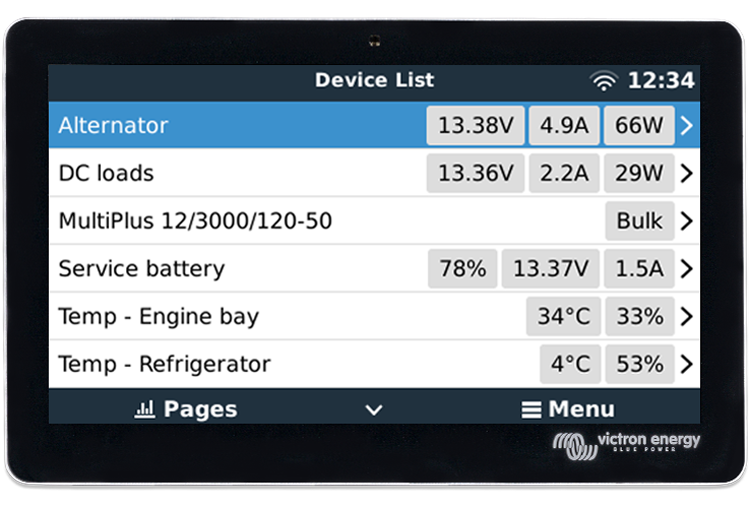borednerds
New Member
So I've been debating the BMV712 vs smartshunt for my system and the temperature sensing lead me down a rabbit hole for which I have not found a satisfying answer. Which temp sensor(s?) do I need?
I am planning to have my battery bank stored about 10ft from the rest of my system in an isolated, insulated and heated compartment. In the future, I plan to use either a cerbo gx or RPi4 running VenusOS.
My understanding is the following:
1) There is a battery temp sensor for the smartshunt/BMV712;
2) There is a battery temp sensor for the Multiplus;
3) there is a battery temp sensor for the Smart Solar CC; AND
4) there is the Smart Battery Sense, for remotely installed batteries.
5) (there is also a temp sensor in the JBD BMS, which may be accessible to the system, but more discovery is required here).
Then, in the victron documentation, it says that using multiple battery temp sensors will send conflicting information to the various components, but also that the components wont share the temp information?
From page 2 of the Smart Battery Sense manual
If I am understanding this correctly, I should not use the Smart Battery Sense and simply run the temp sensor with the leads from the battery to the BMV712/smartshunt.
Will the BMV share the battery temperature information with Multi and the SCC to ensure proper temperature compensation during charging? Or do I need to run 3 temp sensors to the battery?
What if the plan is to add the cerbo/rpi4 later? Will the BMV temp sensor only share the temp data through the cerbo? Or will it share it over the smart network? I guess if this is the case, I should move up the timeline to get the cerbo/rpi online.
Thanks!
I am planning to have my battery bank stored about 10ft from the rest of my system in an isolated, insulated and heated compartment. In the future, I plan to use either a cerbo gx or RPi4 running VenusOS.
My understanding is the following:
1) There is a battery temp sensor for the smartshunt/BMV712;
2) There is a battery temp sensor for the Multiplus;
3) there is a battery temp sensor for the Smart Solar CC; AND
4) there is the Smart Battery Sense, for remotely installed batteries.
5) (there is also a temp sensor in the JBD BMS, which may be accessible to the system, but more discovery is required here).
Then, in the victron documentation, it says that using multiple battery temp sensors will send conflicting information to the various components, but also that the components wont share the temp information?
From page 2 of the Smart Battery Sense manual
When can I use Smart Battery Sense ...and when should I avoid using it?
- Check the VE.Smart Networking compatible products list for compatible Solar Chargers.
- Smart Battery Sense is not needed, or allowed, in systems which are already controlled by a Color Control GX or Venus GX, see FAQ Q6 for more info.
- Smart Battery Sense is not needed for installations which already have a BMV-712 (battery monitor) with a temperature sensor accessory.
- For installations using a BMV-702 together with its optional temperature sensor accessory - for wireless connectivity consider adding a VE.Direct Bluetooth Smart dongle instead of a Smart Battery Sense.
If I am understanding this correctly, I should not use the Smart Battery Sense and simply run the temp sensor with the leads from the battery to the BMV712/smartshunt.
Will the BMV share the battery temperature information with Multi and the SCC to ensure proper temperature compensation during charging? Or do I need to run 3 temp sensors to the battery?
What if the plan is to add the cerbo/rpi4 later? Will the BMV temp sensor only share the temp data through the cerbo? Or will it share it over the smart network? I guess if this is the case, I should move up the timeline to get the cerbo/rpi online.
Thanks!





